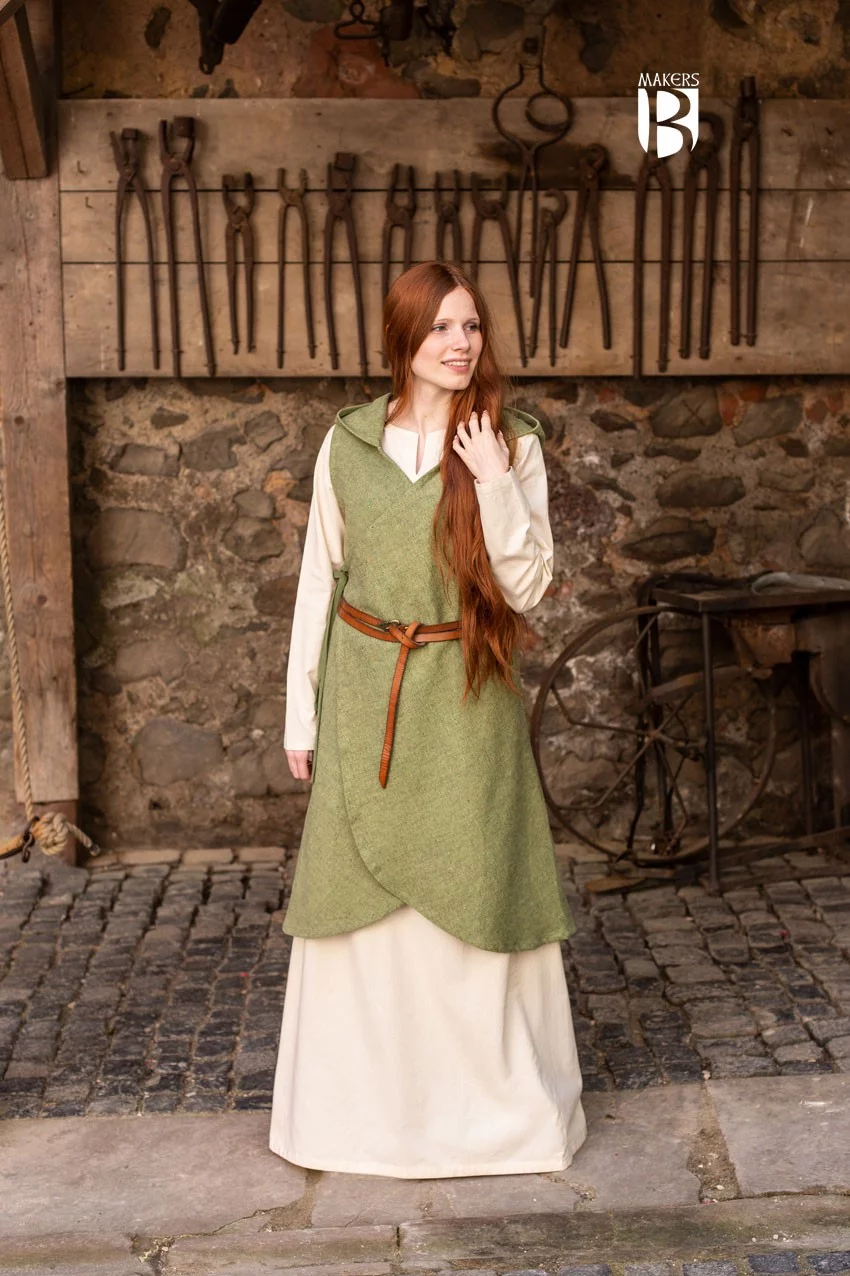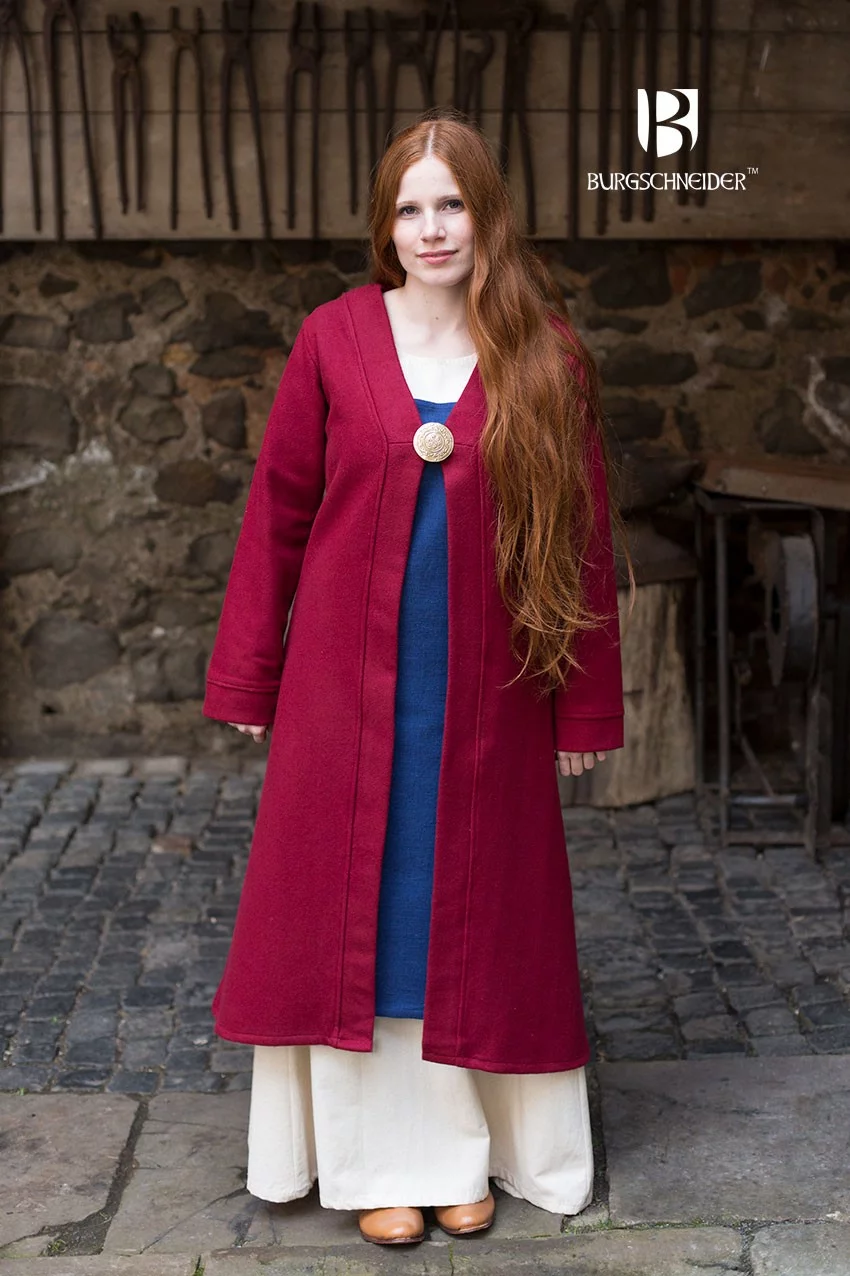What is the Brial?
The brial is an emblematic garment that symbolizes elegance and sophistication in women's clothing during the Middle Ages. This long, fitted dress was often made from high-quality fabrics such as silk, but could also include other rich fabrics like wool or velvet, and was distinguished by its unique design. The brial was characterized by fitting at the waist, allowing the fabric to fall straight down or in a gentle circle to the feet, creating a sculpted silhouette that enhanced the female curves.

Beyond its function as clothing, the brial was a symbol of wealth and social status. These dresses were often adorned with elaborate embroideries, lace, pearls, and other luxurious details, making them an ideal choice for special occasions, such as banquets, religious ceremonies, and noble events. Furthermore, the brial was seldom worn alone; it was common for it to be accompanied by other wardrobe elements such as headdresses, mantles, or capes, and accessories like jewelry that further enhanced the wearer’s look.
During the Middle Ages, the use of the brial spread throughout Europe, being adopted by both the upper classes and the more humble. However, the variations of the brial always reflected the economic and social position of the wearer. Over time, brial designs evolved, adapting to contemporary fashions and presenting a wide range of colors, styles, and fabrics, allowing it to maintain its relevance throughout the centuries.
In this sense, the brial manifests not only as a garment but as a true reflection of the cultural and social identity of medieval women. Its sophistication and beauty endure over time, inspiring contemporary fashion, and its legacy can be seen in many current trends. Its history is intrinsically linked to the evolution of fashion and social norms of its time, making it a fascinating object of study for historians and fashion lovers alike.

If you are interested in learning more about this fascinating garment, we invite you to explore our collection of brials. Here, you can discover a variety of styles and designs, each with its own history and charm, reflecting the rich textile tradition of the medieval era.
















